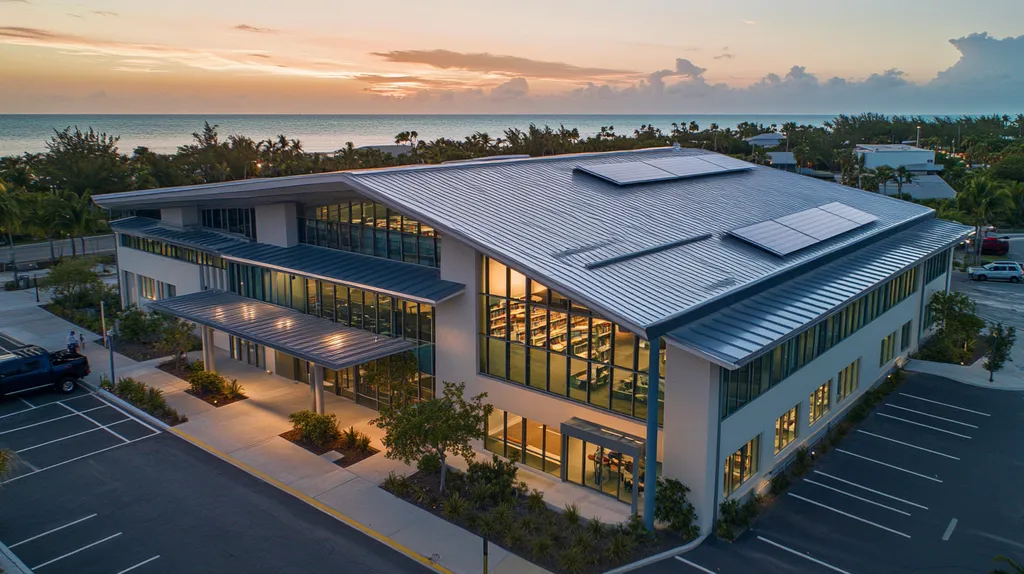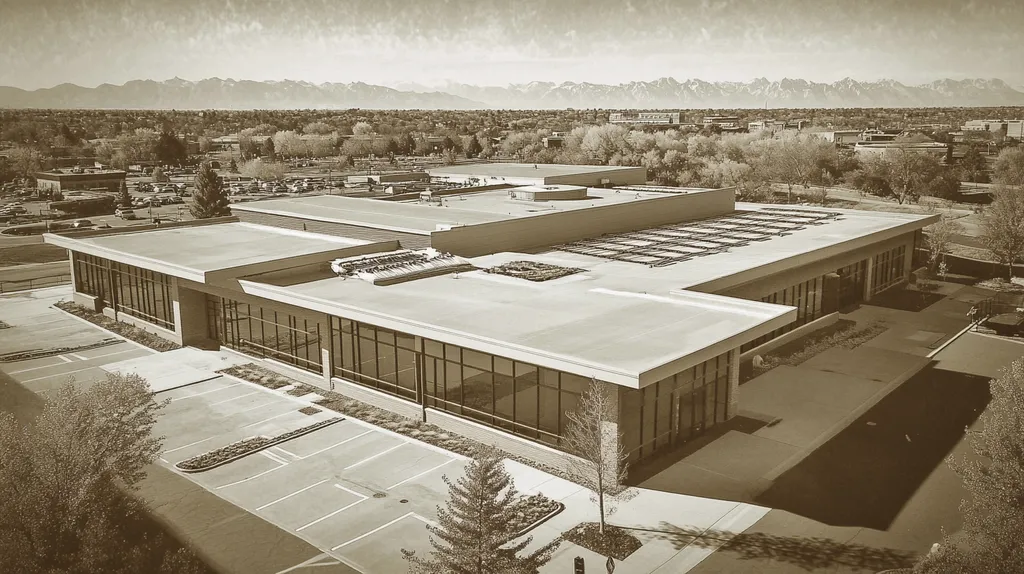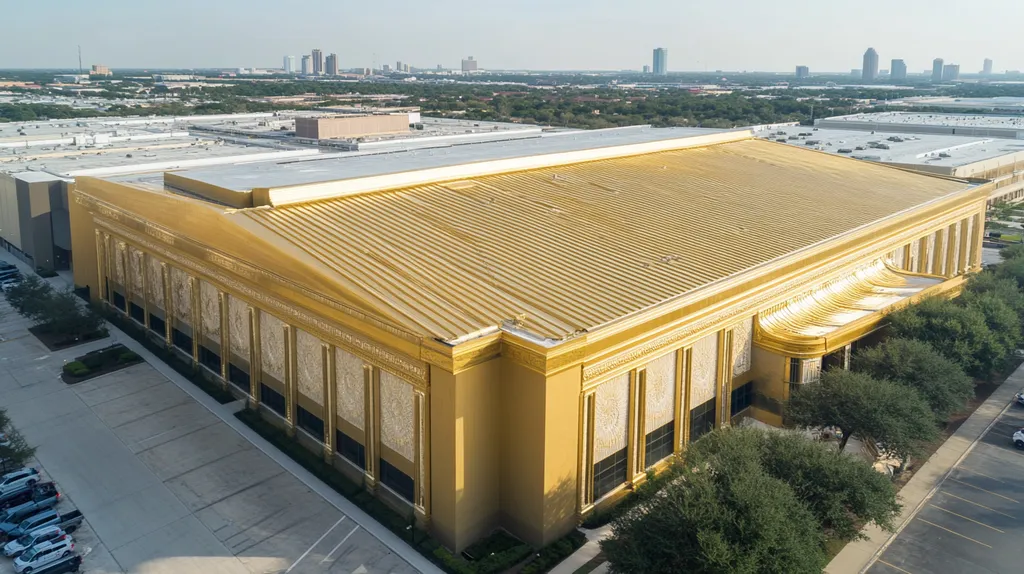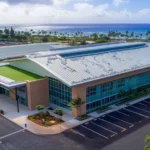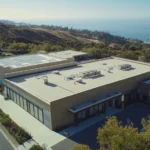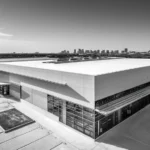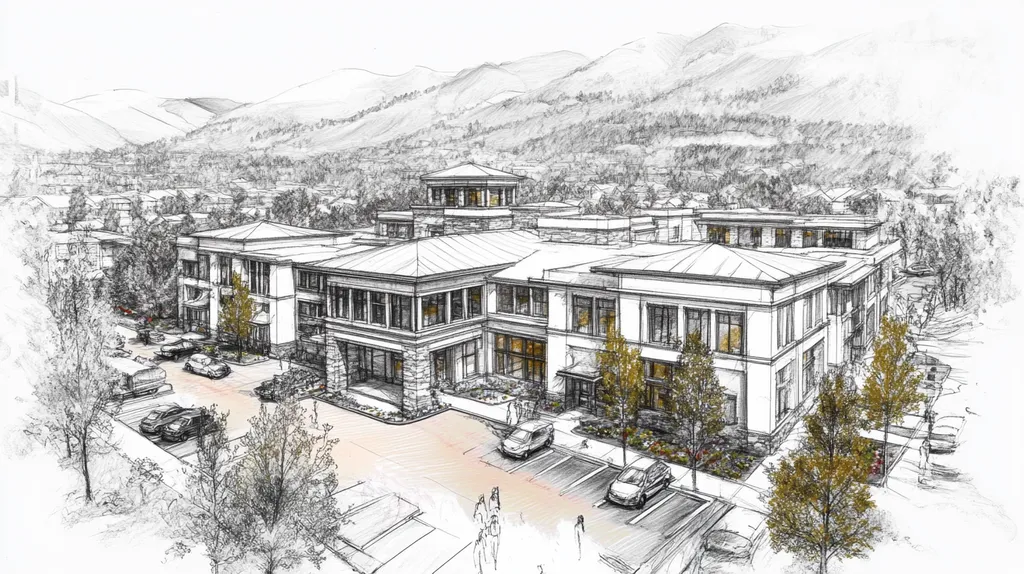Welcome to today’s Battle Royale featuring two roofing heavyweights: “TPO” in the east corner versus “PVC” in the west!
Tonight’s showdown pits these contenders against each other across six punishing rounds designed to test every aspect of their performance for Commercial Roof Contractor Experience.
At stake? Millions in potential costs, decades of building protection, and the critical performance demands of modern commercial and industrial facilities.
Our professional judging panel will evaluate each round on technical merit, real-world performance, and value delivery. After all six rounds, we’ll declare our ultimate champion.
Ladies and gentlemen, facility managers and building owners… it’s time to rumble!
ROUND 1: INITIAL COSTS & INSTALLATION
In today’s volatile construction market, choosing between TPO and PVC roofing systems can impact a facility’s bottom line for decades. With material costs fluctuating and skilled labor at a premium, property owners face critical decisions that affect both immediate budgets and long-term performance. Making the wrong choice can lead to premature system failure, disrupted operations, and unexpected replacement costs.
Material Expenses
Material costs represent a significant portion of any commercial roofing project’s budget. TPO membranes typically cost 15-25% less per square foot than PVC, making them an attractive option for cost-conscious property owners.
However, material quality varies significantly among TPO manufacturers, requiring careful supplier selection. Premium TPO products offer enhanced durability and weather resistance, though still at a lower cost than standard PVC.
PVC membranes command higher prices due to their superior chemical resistance and proven long-term performance. While this increases initial investment, many facility managers find the extended lifespan justifies the cost.
For pure material costs, TPO’s lower price point earns it an “ADVANTAGE” in this category.
Installation Complexity
When evaluating installation requirements, contractor experience becomes paramount. Washington State’s L&I Verify tool helps property owners assess contractors’ expertise and compliance status for complex roofing installations. (source: Washington State L&I)
TPO installations generally require less specialized training and fewer steps than PVC. The simpler welding process and lighter weight materials allow for faster completion with standard roofing crews.
PVC installation demands more technical expertise, particularly around seam welding and flashing details. This complexity often requires specialized certification and experienced installers.
Given the simpler installation requirements, TPO gains another clear “ADVANTAGE” in this category.
Project Timeline
Project duration directly impacts facility operations and overall costs. TPO installations typically complete 20-30% faster than comparable PVC projects due to simpler application techniques and fewer required steps.
Weather sensitivity affects both systems, but TPO’s faster installation provides more flexibility in scheduling around weather windows. This can be crucial in regions with limited installation seasons.
PVC installations require more precise environmental conditions and longer cure times. While this extends the project timeline, it helps ensure proper membrane fusion and long-term performance.
TPO’s faster completion time earns it an “ADVANTAGE” in project timeline considerations.
ROUND 1 WINNER: TPO
ROUND 2: DURABILITY & LIFESPAN
Commercial roofing systems face increasingly extreme weather conditions, making durability and longevity more critical than ever. With replacement costs reaching millions for large facilities, the choice between TPO and PVC directly impacts long-term operational budgets and business continuity. Modern roofing materials must withstand not just weather, but also evolving building codes and insurance requirements.
Material Resilience
TPO membranes demonstrate strong resistance to impact damage and UV exposure, with newer formulations showing improved heat resistance. These properties help maintain structural integrity during severe weather events and seasonal temperature fluctuations.
However, TPO’s chemical composition can vary significantly between manufacturers, leading to inconsistent performance in challenging environments. Some facilities have reported premature aging and seam failures, particularly in high-heat regions.
PVC membranes excel in chemical resistance and maintain their physical properties longer than TPO. Their proven track record in industrial environments and superior resistance to acids, oils, and other pollutants make them particularly valuable for manufacturing facilities.
Given its superior chemical stability and consistent performance, PVC earns an “ADVANTAGE” in material resilience.
Weather Performance
TPO roofing systems provide excellent protection against UV radiation and basic weather exposure. Their white surfaces effectively reflect sunlight, helping maintain consistent interior temperatures and reducing cooling costs.
The Insurance Information Institute emphasizes that proper insurance coverage for roofing contractors helps protect building owners from weather-related installation issues and future damage claims. (source: Insurance Information Institute)
PVC membranes demonstrate exceptional resistance to extreme weather conditions, including high winds, heavy rain, and prolonged sun exposure. Their hot-air welded seams create permanent bonds that resist separation even under severe stress.
For overall weather performance, PVC claims another clear “ADVANTAGE” in this category.
Long-Term Value
TPO roofing systems typically last 15-20 years when properly installed and maintained. This lifespan can provide adequate value for buildings with shorter ownership horizons or planned renovations.
Regular maintenance requirements for TPO tend to increase after the first decade, particularly around seams and penetrations. This can impact total ownership costs and facility operations.
PVC systems consistently achieve 25-30 year lifespans, with some installations exceeding three decades. Their superior durability and reduced maintenance needs often offset higher initial costs.
PVC’s extended lifespan and lower maintenance requirements earn it an “ADVANTAGE” in long-term value.
ROUND 2 WINNER: PVC
ROUND 3: PERFORMANCE FACTORS
In the demanding world of commercial roofing, performance factors can make or break a facility’s operational success. With stakes running into millions of dollars, choosing between TPO and PVC membranes requires careful evaluation of key performance metrics. Commercial roofing systems like TPO and PVC demand specialized expertise for optimal installation and long-term effectiveness. (source: American Weatherstar)
Durability Under Stress
Durability defines a commercial roof’s ability to maintain structural integrity under sustained environmental and physical stress. This factor directly impacts maintenance costs and replacement intervals.
TPO membranes demonstrate excellent flexibility and impact resistance, particularly in moderate climates. Their ability to withstand thermal cycling and basic chemical exposure makes them suitable for many commercial applications.
PVC systems excel in extreme conditions, offering superior chemical resistance and maintaining structural integrity even under harsh industrial exposure. Their hot-air welded seams create permanent bonds that outperform TPO in long-term durability tests.
Given its superior resilience in demanding conditions, PVC earns an “ADVANTAGE” in this category.
Energy Efficiency
Energy efficiency impacts both operational costs and environmental footprint. Modern commercial roofing must balance thermal performance with durability to optimize building efficiency.
TPO membranes feature highly reflective surfaces that maintain their solar reflectance index (SRI) over time. This characteristic helps reduce cooling loads and energy consumption throughout the roof’s lifespan.
While PVC roofing can be manufactured with reflective properties, it typically doesn’t maintain its reflectivity as effectively as TPO. This can result in gradually increasing cooling costs over time.
TPO’s superior reflective properties and consistent energy performance earn it an “ADVANTAGE” in this category.
Weather Resistance
Weather resistance directly affects a roof’s ability to protect facility assets and maintain watertight integrity. Failures in this area can lead to costly repairs and business interruption.
TPO systems provide good resistance to UV radiation and basic precipitation. However, their performance can vary significantly between manufacturers, particularly in regions with extreme weather patterns.
PVC membranes consistently demonstrate exceptional resistance to severe weather conditions, including high winds and intense UV exposure. Their superior seam strength and proven track record in extreme environments make them the more reliable choice.
PVC’s consistent performance in challenging weather conditions earns it an “ADVANTAGE” in this category.
ROUND 3 WINNER: TIE
ROUND 4: MAINTENANCE REQUIREMENTS
Maintenance decisions for commercial roofing systems directly impact facility operating costs and asset longevity. With replacement costs reaching millions of dollars, choosing between TPO and PVC maintenance requirements becomes a critical business decision. Poor maintenance strategies can lead to premature system failure, unexpected repairs, and significant business disruption.
Regular Inspection Requirements
TPO roofing systems typically require semi-annual inspections to maintain warranty coverage and optimal performance. These inspections focus on seam integrity, membrane condition, and drainage system functionality.
Most TPO manufacturers recommend professional inspections every six months, with additional checks after severe weather events. This relatively straightforward inspection process helps identify potential issues before they become major problems.
PVC systems demand more frequent professional inspections, often quarterly, to monitor seam integrity and chemical exposure impacts. Their complex chemical composition requires specialized knowledge to properly assess condition and performance.
Given its simpler inspection requirements, TPO earns an “ADVANTAGE” in this category.
Repair Complexity
Skylight Roofing emphasizes the importance of using licensed and certified contractors for both TPO and PVC repairs to ensure proper maintenance and protect warranty coverage. (source: Skylight Roofing)
TPO repairs generally involve straightforward processes that many qualified contractors can perform. Common issues like punctures or small tears can often be addressed quickly with standard repair materials.
PVC repairs require more specialized techniques and materials, particularly around seams and chemical exposure areas. This complexity often leads to longer repair times and higher costs.
TPO’s simpler repair requirements earn it another “ADVANTAGE” in this category.
Long-term Maintenance Costs
TPO systems typically show predictable maintenance patterns throughout their lifespan. Early-year costs remain low, with gradual increases in maintenance requirements starting around year 10.
The simplified nature of TPO maintenance allows for more competitive service pricing. Many contractors can perform routine maintenance, creating healthy market competition.
PVC systems often incur higher maintenance costs due to specialized service requirements and more frequent professional inspections. However, their superior durability can mean fewer emergency repairs over time.
TPO’s lower overall maintenance costs secure an “ADVANTAGE” in this category.
ROUND 4 WINNER: TPO
ROUND 5: SUSTAINABILITY CREDENTIALS
Environmental regulations and sustainability requirements increasingly drive commercial roofing decisions. With carbon reduction mandates expanding and energy costs soaring, property owners face strict scrutiny of their roofing choices. The wrong selection can result in regulatory non-compliance, increased operational costs, and damaged corporate sustainability ratings.
Energy Efficiency
TPO roofing systems excel in solar reflectivity, maintaining up to 85% reflectance even after years of service. This high reflectance translates directly to reduced cooling costs and lower building carbon footprints.
Modern TPO formulations include advanced UV stabilizers that help maintain reflective properties longer than earlier generations. This sustained performance helps facilities consistently meet energy efficiency targets.
PVC systems offer good initial reflectivity but typically show more degradation over time. While still energy efficient, they generally require more frequent cleaning and maintenance to maintain optimal reflective properties.
TPO’s superior long-term reflectivity earns it an “ADVANTAGE” in energy efficiency.
Material Sourcing and Manufacturing
ServiceTitan’s Roofing License Guide emphasizes that properly licensed contractors understand material sustainability requirements and environmental compliance standards for both TPO and PVC installations. (source: ServiceTitan Roofing License Guide)
TPO manufacturing processes produce fewer harmful byproducts and can incorporate recycled materials without compromising performance. This reduced environmental impact appeals to facilities pursuing green building certifications.
PVC production involves chlorine-based processes that raise environmental concerns. While manufacturers have improved their methods, PVC still carries a higher environmental manufacturing footprint.
TPO’s cleaner manufacturing process earns it an “ADVANTAGE” in this category.
End-of-Life Management
TPO membranes can be fully recycled into new roofing materials at the end of their service life. This recyclability helps facilities meet zero-waste initiatives and supports circular economy goals.
Most TPO manufacturers now offer take-back programs that simplify the recycling process. These programs reduce landfill impact and often provide credits toward replacement materials.
PVC recycling presents significant challenges due to its chemical composition. Most PVC roofing material ends up in landfills, where it can take decades to decompose.
TPO’s superior recyclability earns it an “ADVANTAGE” in this category.
ROUND 5 WINNER: TPO
ROUND 6: SPECIALIZED APPLICATIONS
Specialized commercial roofing applications demand precise material selection and expert installation to protect multi-million dollar facilities. Manufacturing plants, data centers, and healthcare facilities each present unique challenges that can quickly expose inadequate materials or poor installation. The wrong choice between TPO and PVC in these demanding environments leads to premature failure, operational disruptions, and extensive repair costs.
Chemical Exposure Resistance
Industrial facilities regularly expose roofing systems to harsh chemicals, oils, and pollutants that can degrade membrane integrity. TPO membranes offer moderate chemical resistance suitable for light industrial applications and areas with occasional exposure to mild contaminants.
However, TPO’s performance varies significantly between manufacturers when faced with sustained chemical exposure. Some formulations show accelerated degradation when contacted by industrial solvents or petroleum products.
PVC membranes demonstrate superior resistance to industrial chemicals, acids, and oils. Their molecular structure maintains integrity even under prolonged exposure to harsh industrial environments.
PVC’s proven chemical resistance earns it a clear “ADVANTAGE” in this category.
Temperature Management
Data centers and manufacturing facilities require precise temperature control to maintain optimal operations. TPO’s highly reflective surface helps reduce cooling loads and maintains its reflective properties longer than most alternatives.
American WeatherStar emphasizes that different roofing materials handle temperature variations and installation complexities differently, affecting both initial costs and long-term performance. (source: American WeatherStar)
PVC systems offer good initial temperature management but typically require more maintenance to maintain optimal reflective properties. Their thermal performance can degrade faster in high-heat environments.
TPO’s superior temperature management capabilities earn it an “ADVANTAGE” in this category.
Clean Room Compatibility
Healthcare facilities and electronics manufacturers require roofing systems that won’t contaminate sensitive environments. TPO membranes release minimal volatile organic compounds (VOCs) during and after installation, making them suitable for clean room applications.
TPO’s simpler chemical composition reduces the risk of particle contamination. The material’s smooth surface also helps prevent accumulation of contaminants that could affect indoor air quality.
PVC systems can emit trace chemicals during installation and thermal cycling. While modern formulations have improved, they still present higher contamination risks for sensitive environments.
TPO’s lower contamination risk earns it an “ADVANTAGE” in this category.
ROUND 6 WINNER: TPO
AND THE WINNER IS…
After six grueling rounds of technical assessment, TPO emerges victorious with a commanding 4-1-1 record in this commercial roofing showdown!
TPO dominated the competition with knockout performances in cost efficiency, maintenance simplicity, and sustainability credentials. Its ability to deliver faster installation times, lower maintenance requirements, and superior energy efficiency proved decisive in securing this championship bout.
But don’t count PVC out of the fight! This veteran contender showed its true strength in Round 2, where its exceptional durability and chemical resistance capabilities make it the undisputed champion for industrial facilities and harsh chemical environments.
Let’s be clear, building owners: While TPO claims today’s title, every facility brings its own unique challenges to the ring. Local climate conditions, building use requirements, and specific property characteristics can all impact roofing system performance. This analysis provides general guidance but cannot account for all variables in your specific situation.
Before making your final decision, consult with qualified roofing professionals who can evaluate your facility’s particular needs and requirements.
Remember, in the high-stakes world of commercial roofing, the true victory comes not from following the crowd, but from matching your specific building requirements with the right contender’s strengths. Now, let’s get ready for installation!
FREQUENTLY ASKED QUESTIONS
Q. How do initial costs of a commercial roof compare for TPO and PVC?
A. TPO membranes generally cost 15-25% less than PVC. However, PVC offers superior long-term performance, which some facility managers justify due to its longevity. It’s essential to evaluate not just initial expenses but future costs too.
Q. Which offers better durability for an industrial roof: TPO or PVC?
A. PVC membranes consistently outperform TPO with superior chemical resistance and longevity. TPO’s variance in performance among manufacturers can lead to potential failures in demanding environments, making PVC the more reliable choice for durability.
Q. What are the key performance factors for commercial roofs?
A. Key performance factors include durability under stress, energy efficiency, and weather resistance. These metrics influence operational success and can determine whether a roofing system meets a facility’s unique needs and challenges effectively.
Q. How do maintenance requirements differ between TPO and PVC for commercial roofs?
A. TPO typically requires semi-annual inspections, while PVC may need quarterly check-ups. PVC’s complex composition necessitates more frequent professional assessment to monitor its condition, making TPO’s maintenance requirements simpler and more manageable.
Q. What sustainability credentials should I consider for a commercial roof?
A. Evaluate energy efficiency, material sourcing, and end-of-life management. TPO excels in maintaining high reflectivity and recyclability, while PVC has a higher environmental footprint due to its manufacturing process, making sustainability a pivotal consideration.
Q. Which roofing material is better for specialized applications in commercial roofing?
A. PVC is better suited for specialized applications involving harsh chemicals due to its superior resistance. For environments with strict cleanliness requirements, TPO’s low VOC emission and non-contaminating characteristics make it indispensable in sensitive industrial settings.
Q. Can I verify a contractor’s experience in commercial roof installations?
A. Yes, using tools like Washington State’s L&I Verify tool, property owners can assess contractor expertise. It ensures compliance and helps determine if contractors have the necessary skills for complex roofing installations essential for commercial projects.

